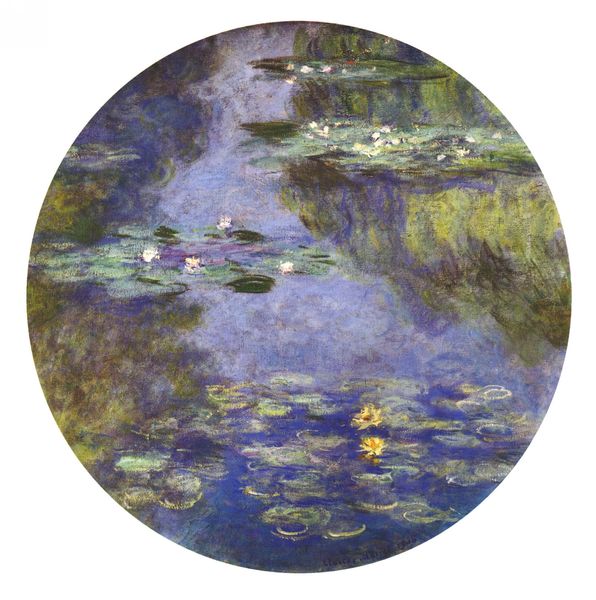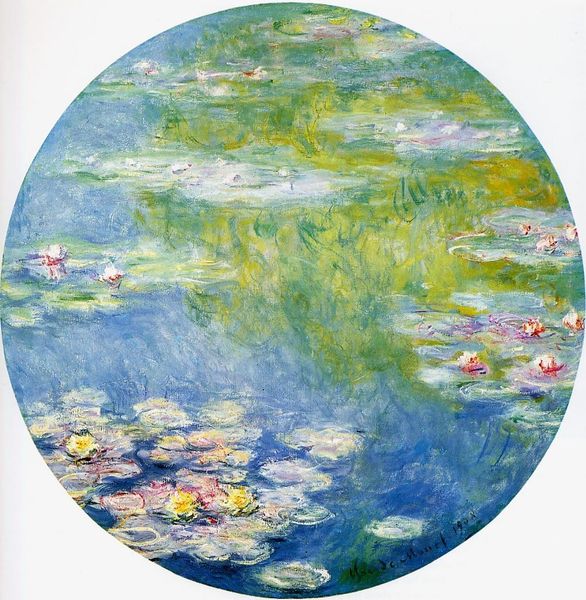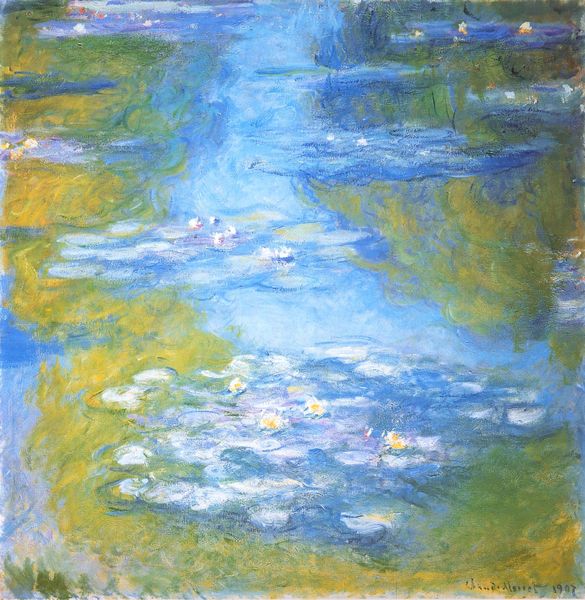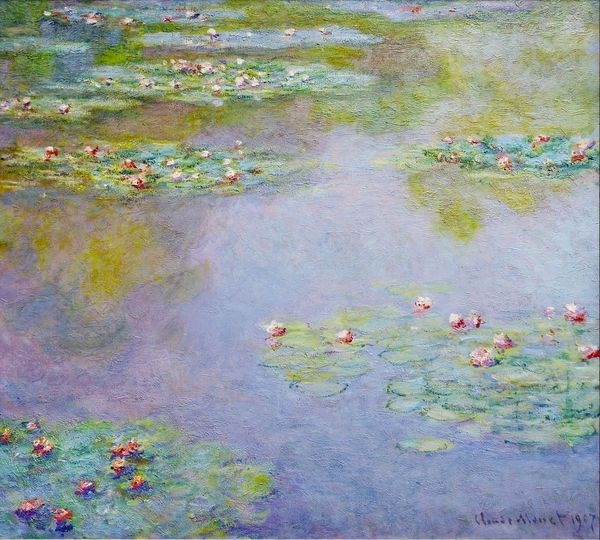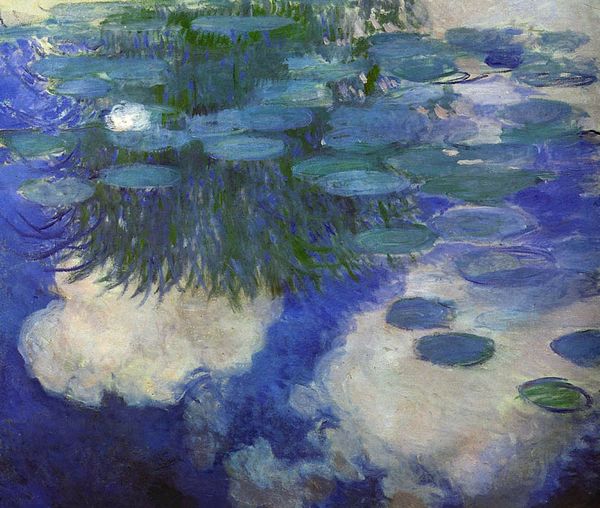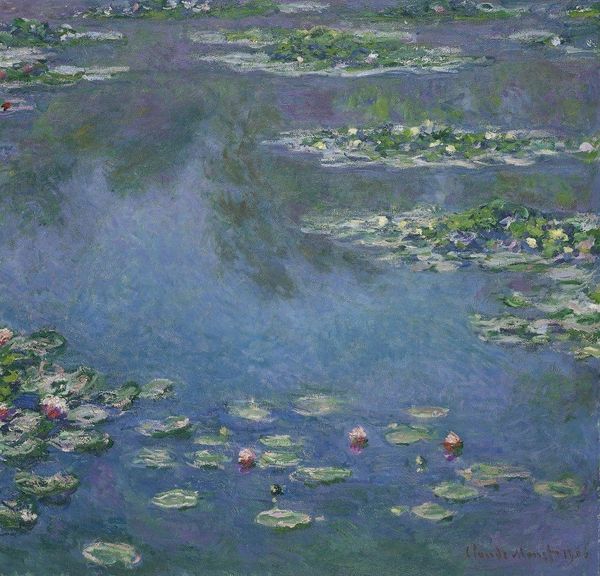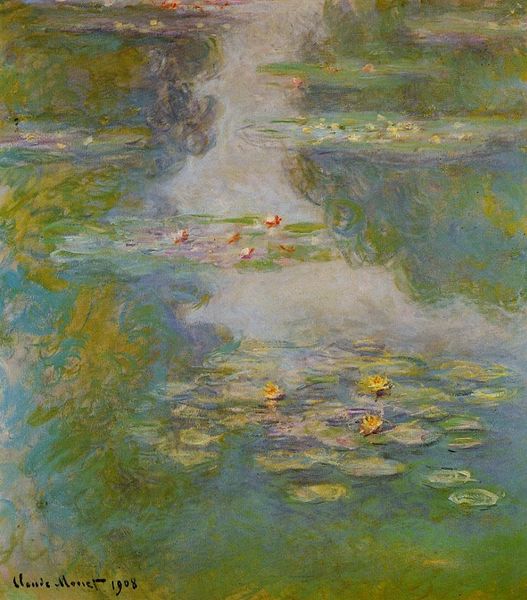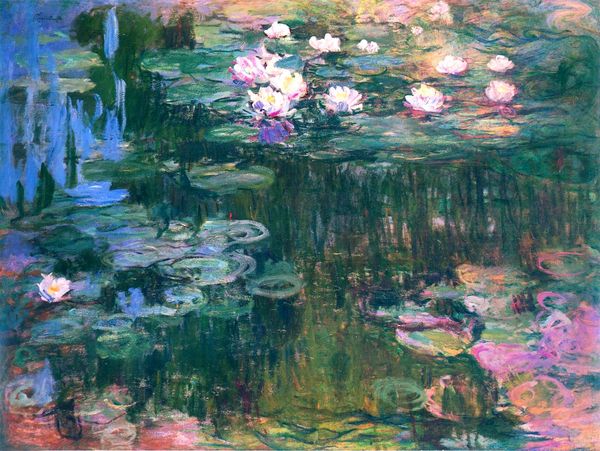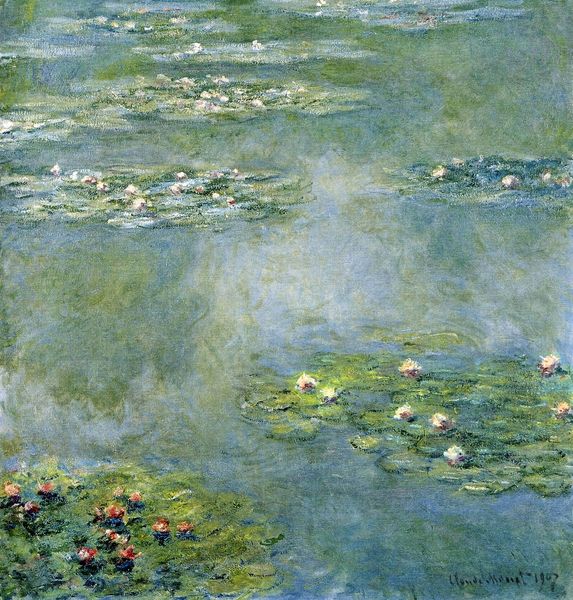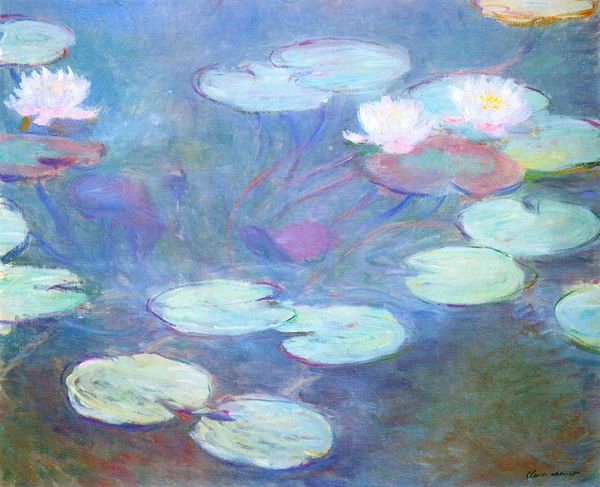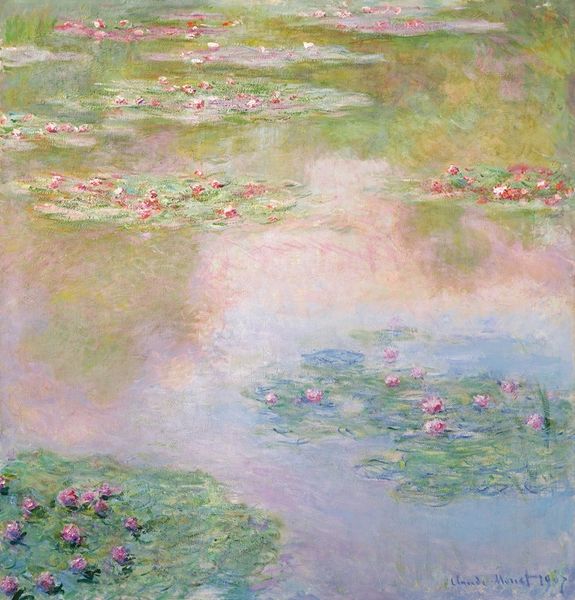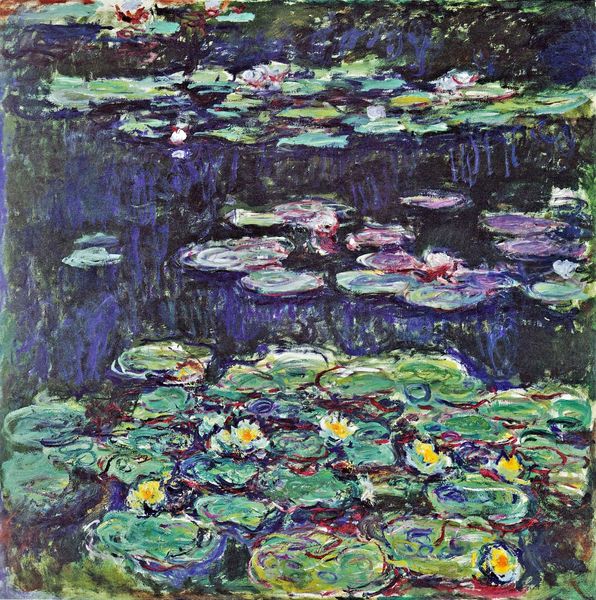
ink
#
tropical
#
abstract painting
#
water colours
#
possibly oil pastel
#
ink
#
pink
#
acrylic on canvas
#
painting painterly
#
watercolour bleed
#
watercolour illustration
#
remaining negative space
#
watercolor
Copyright: Public domain
Curator: Floating, soft…it makes me think of forgiveness, strangely enough. Like seeing the world through teary eyes, but not in a sad way. What's the story here? Editor: Here we have Claude Monet’s *Water Lilies*, painted in 1907. These paintings, and many others from that period, reflect Monet's profound engagement with his garden at Giverny, a space that was not just a source of inspiration but also a carefully constructed ecosystem. Curator: Giverny, huh? It definitely feels like a world unto itself in this piece. The way the light sort of dissolves the edges of everything. Is it ink, watercolor... some kind of pastel? Editor: Monet's oeuvre with water lilies utilized, notably, oil paints, although some commentators observe that, because of their capacity to evoke translucence and atmospheric effects, they also imitate to a certain extent watercolours. The later *Nymphéas* series moves from depictions of reflected skies and trees to explorations of colour, light, and shadow that become increasingly abstract. Now, it’s important to situate Monet and impressionism more generally within the societal currents of late 19th- and early 20th-century France. Curator: See, I knew there was something bigger going on. To me it evokes not just visual impression but like a feeling that exists somewhere beyond conscious thought, almost bordering on surreal. It isn’t just representation; there's something deeper, something I can’t name. What do you mean exactly by societal currents? Editor: Consider the rise of modernity, industrialization, urbanization… all contributing to evolving perceptions of time, space, and the self. For whom was this art created? Which subjectivities are centered and why? This helps us look beyond mere aesthetics. What would a painting like this communicate, for example, to working-class communities? How might this have impacted them? Curator: Hmm. You always bring it back to the people, don't you? But I get it. It's a bit of a leap from pretty flowers to socio-economic theory, but you’re highlighting how art can, or should, reflect our understanding of the broader culture and history we exist in. So, as someone completely outside that historical context, I can find a connection. It’s proof, I guess, of the staying power of art when you see beyond what it shows. Editor: Exactly. It encourages us to consider our place within the continuum, constantly in dialogue with what came before and what might follow. Curator: Well said. Now I can't wait to see how these lilies might bloom again in other unexpected places and voices.
Comments
No comments
Be the first to comment and join the conversation on the ultimate creative platform.
